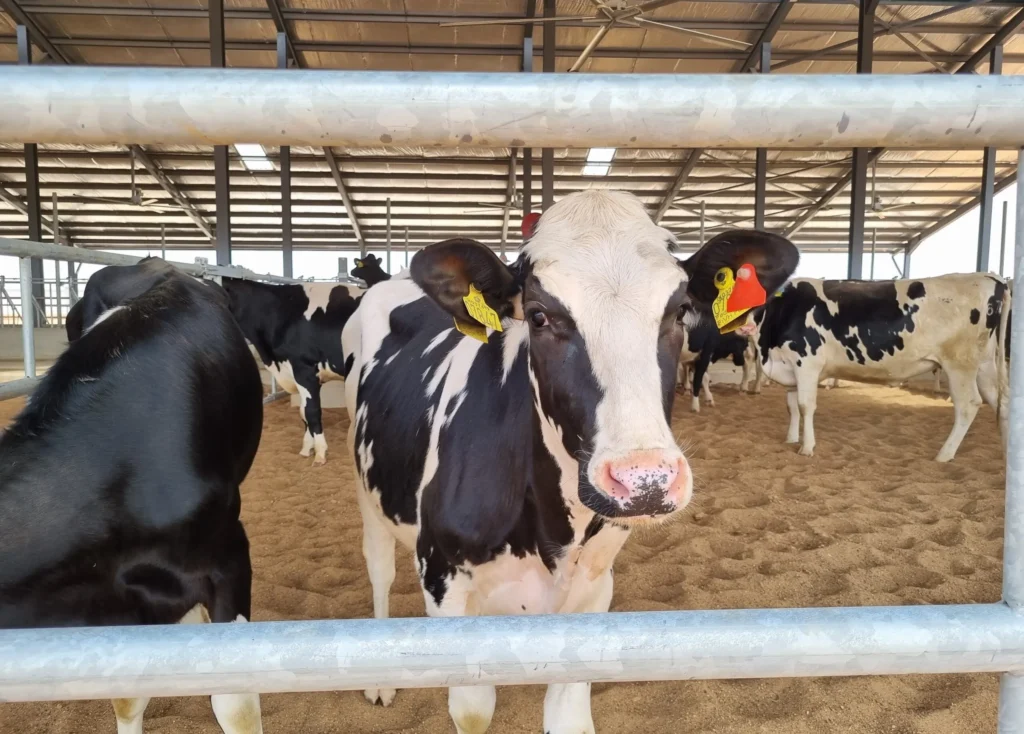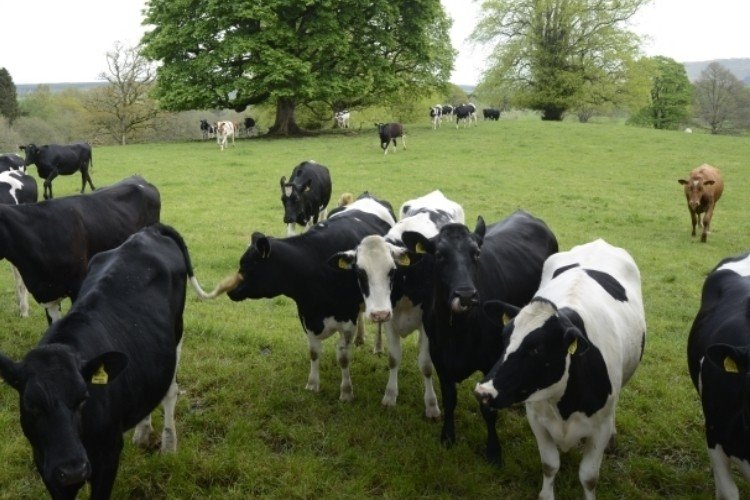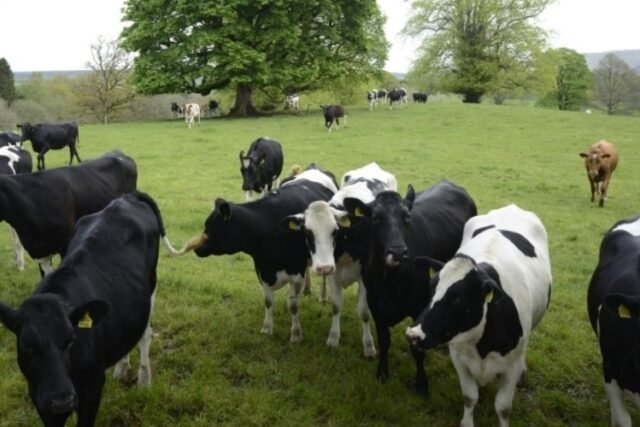In the heart of Nigeria’s bustling dairy landscape, a quiet revolution is unfolding — and it’s being powered by artificial intelligence. Researchers are now leveraging advanced spectroscopic techniques to redefine how milk quality is assessed, tracked and assured across the country’s dairy value chain. What this means is a potential leap from conventional laboratory checks into real-time, field-ready, high-precision analytics.
Historically, Nigeria’s dairy sector has grappled with multiple bottlenecks: sub-optimal local production, reliance on imports, concerns around adulteration and contamination, and a fragmented collection and processing network. That all speaks to a system ripe for transformation, and the technology emerging now may be just the tool needed.
One groundbreaking study, led by Nigerian-born researcher Dr. Habeeb Babatunde of Boise State University, has demonstrated how mid-infrared (MIR) spectroscopy combined with a machine-learning algorithm called support vector regression (SVR) can predict the concentrations of two important milk proteins — β-lactoglobulin and α-lactalbumin — signalling nutritional quality and suitability for processing.
Dr. Babatunde explains: “Our goal is to bring laboratory-grade milk analysis to the farm gate.” The implication is profound: Nigeria could deploy low-cost, reagent-free, rapid tests at collection points, instead of relying on centralised laboratories that may be distant, costly and slow.

Table of Contents
How the Spectroscopy Technology Works and Why It Matters
At its core, the system uses light-based spectroscopy. When a milk sample is exposed to a mid-infrared beam, specific wavelengths are absorbed depending on the chemical composition of the milk. The result is a spectral signature. Traditional methods, such as partial least squares (PLS) regression, have handled these signatures to evaluate quality — but they struggle when dealing with complex, nonlinear biological data like milk.
Enter SVR: a machine-learning model that better handles complexity and non-linear relationships. In Dr Babatunde’s study, SVR proved more accurate and robust than PLS when analysing the MIR data. This matters because milk quality — including protein content, contamination and adulteration — is not always linearly predictable. The ability to capture these nuances opens the door to more reliable, on-site quality control.
For Nigeria’s dairy sector, this translates into potential for:
- Faster testing – instant or near-instant results at collection or processing points.
- Lower cost – no need for expensive reagents, highly specialised labs or long wait times.
- Better traceability – quality data collected at the point of origin, enhancing the integrity of the supply chain.
- Improved local production – as the technology becomes accessible, farmers and cooperatives may gain the tools to raise standards, reduce import dependence and enhance competitiveness.
With more than 60% of Nigeria’s dairy products currently imported, local producers face a stiff task in meeting both volume and quality challenges. Deploying AI-powered spectroscopy could shift the balance.
Deployment, Challenges and Opportunities of AI-Powered Spectroscopy in the Nigerian Context
Turning this innovation from lab to large-scale deployment in Nigeria demands a coordinated effort. The technology may be proven, but scaling it across Nigeria’s diverse dairy regions — from Oyo to Kaduna to Plateau — presents real logistical, economic and capacity hurdles.
Some of the key considerations include:
- Collaboration: Universities, tech start-ups, dairy cooperatives and government agencies need to synchronise efforts. For instance, portable MIR devices must be developed or adapted for use in the Nigerian context, with AI models trained on local milk profiles.
- Training and infrastructure: Field operators must be trained not only in sampling and device handling, but also in interpreting results and acting on them. At present, many milk collection centres are informal or small-scale.
- Cost and accessibility: Even a portable device needs to be affordable and serviced locally. Replacement parts, calibration, software updates and support must be factored in.
- Data management and traceability: Rolling out the technology means generating data — how this is stored, analysed and used to feed back into the system is critical. Especially if consumer confidence and export ambitions are part of the vision.
- Regulatory and policy support: The technology aligns neatly with Nigeria’s national dairy policy ambitions — achieving self-sufficiency, improving local output and reducing reliance on imports. But supportive regulation, standards setting, and incentives may all need to be strengthened.

Dr Babatunde’s vision underlines the point: “Nigeria has the talent and scientific capacity to lead Africa in digital agriculture and food analytics.” With the right backing, local innovation could shift the country from being import-driven to innovation-driven.
At the same time, the dairy industry stands to gain. Farms and cooperatives that adopt quality-control tools early may enjoy competitive advantages: better milk pricing, stronger consumer trust, eligibility for higher-value markets (including export), improved brand reputation and fewer losses from spoilage or rejection.
In practical terms, this might look like a cooperative in Kaduna deploying a portable MIR device, screening milk daily, immediately flagging samples out of spec, then segregating or rejecting low-quality milk rather than shipping it forward and risking later rejection.
For the consumer, it means better assurance that milk labelled ‘locally produced’ meets set nutritional and safety standards — an area where domestic producers have sometimes suffered perception challenges.
The Road Ahead: What This AI-powered Spectroscopy Means for Nigeria’s Dairy Future
If adopted widely, AI-powered spectroscopy could become a cornerstone of Nigeria’s dairy transformation. A few pathways for the road ahead include:
- Scale pilot projects: Launching in high-output dairy states to prove the field readiness of devices and models, adapt them to regional milk variations, collect data and refine the system.
- Strengthen value-chain linkages: Ensuring that testing is integrated from collection through processing, distribution and retail, so quality is monitored end-to-end — not just at the end.
- Standardise protocols and certification: Government or industry bodies may build certification schemes based on spectral testing, offering producers who comply with higher market access.
- Incentivise adoption: Funding, subsidies or preferential contracts might accelerate the uptake among smaller dairy farmers or cooperatives who otherwise could struggle to invest in technology.
- Build local manufacturing or servicing capacity: Over time, devices may be produced locally, reducing cost and customising features to Nigerian conditions (temperature, power reliability, milk variability).
- Market feedback and consumer engagement: Producers may engage consumers by showcasing quality metrics derived from spectroscopic tests, thereby building trust in local milk and reducing the appeal of imported alternatives.
Nigeria stands at a moment of opportunity. The dairy industry is under pressure — to boost local production, improve quality, reduce spoilage, raise farmer incomes and meet rising consumer demand for safer, higher-quality milk. An innovation such as MIR spectroscopy combined with AI isn’t a silver bullet — but it is a tool with real potential to shift the equilibrium.
The human dimension matters too. For a smallholder dairy farmer in Plateau State, the ability to test milk on-site and immediately know whether it meets standards could mean the difference between acceptance and rejection, profit and loss, dignity and frustration. For a dairy processor in Oyo State, rejecting adulterated or contaminated milk upstream prevents costly downstream loss and reputational damage.
And for the consumer in Lagos or Abuja, it could mean fewer questions about whether the “fresh local milk” they buy is up to scratch.

Conclusion
The deployment of AI-powered spectroscopy in Nigeria’s dairy industry represents a compelling intersection of technology, agriculture and food security. With strategic partnerships, informed policy, and real-world pilots, the country may not just improve milk quality — it may transform an entire value chain, elevate farmers, reassure consumers and reduce dependence on imports. The promise is clear; the work ahead is substantial. But for Nigeria’s dairy future, the horizon is distinctly brighter.
Join Our Social Media Channels:
WhatsApp: NaijaEyes
Facebook: NaijaEyes
Twitter: NaijaEyes
Instagram: NaijaEyes
TikTok: NaijaEyes





